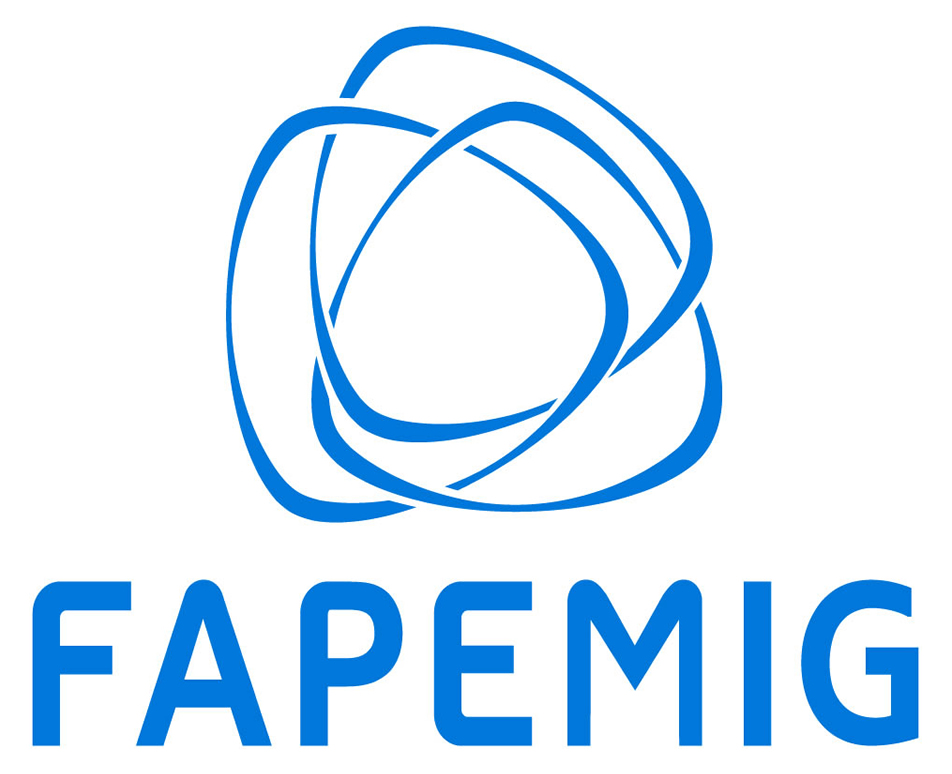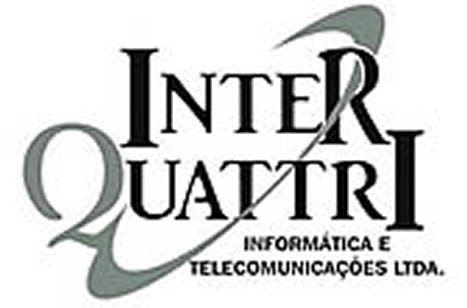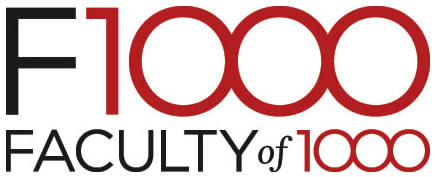Posters
| Category 'P'- Systems Biology and Networks' |
| Poster - P01 |
| Inferring gene regulatory relationships from a meta-analysis of matched copy number and transcriptomics data sets |
| Richard Newton, Medical Research Council, |
| Lorenz Wernisch, Medical Research Council, |
| Short Abstract: We investigate inferring gene regulatory relationships from matched array comparative genomic hybridisation and transcriptomics experiments. In Goh et al. (Plosone 2013) we experimentally validated inferred regulatory pairs from such data, proving the viability and value of such an approach. Here we explore a meta-analysis of thirty matched datasets. |
| Poster - P02 |
| Study of senescence dynamics through the Chemical Master Equation |
| Luciana de Oliveira, Universidade Federal de Santa Maria, Brazil |
| José Carlos Merino Mombach, Universidade Federal de Santa Maria, Brazil Gastone Castellani, Università di Bologna, Italy |
| Short Abstract: There is an increasing interest in the stochastic behaviour of genetic reaction networks in systems biology. In this way, we propose a model for the cell fate decision between senescence and apoptosis, through the chemical master equation with a positive feedback loop between the tumour-suppressor p53 and the protein p38MAPK. |
| Poster - P03 |
| Bayesian inference and network models for prioritizing cancer drug combinations |
| Elizabeth Coker, Institute of Cancer Research, |
| Paul Clarke, Institute of Cancer Research, Paul Workman, Institute of Cancer Research, Bissan Al-Lazikani, Institute of Cancer Research, |
| Short Abstract: Drug resistance is one of the major challenges facing oncology: targeted drug combinations adapted to the patient are a key part of the solution. Clinicians need rational, adaptive tools for identifying optimum combinations, but such tools do not yet exist. Here we present tools and models towards addressing this goal. |
| Poster - P04 |
| System Biology Approach to Detect and Assign Biological Functions and Regulator Genes to Feed Efficiency Traits in Nellore Cattle |
| Pâmela Alexandre, University of São Paulo, Brazil |
| Lisette Kogelman, University of Copenhagen, Denmark Miguel Santana, University of São Paulo, Brazil Joanir Eler, University of São Paulo, Brazil Haja Kadarmideen, University of Copenhagen, Denmark Heidge Fukumasu, University of São Paulo, Brazil |
| Short Abstract: The objective of this study was to use a system biology approach to identify biological mechanisms involved on feed efficiency in Nellore cattle and its possible regulator genes. Two modules of co-expressed and highly inter-connected genes correlated to feed efficiency were identified as well as five regulator genes. |
| Poster - P05 |
| Inference of Gene Regulatory Networks From Expression Data Integration of Streptococcus agalactiae |
| André Rocha Barbosa, Universidade Estadual de Londrina / Universidade Tecnológica Federal do Paraná, Brazil |
| Laurival Vilas Bôas, Universidade Estadual de Londrina, Brazil Fabrício Martins Lopes, Universidade Tecnológica Federal do Paraná, Brazil |
| Short Abstract: Streptococcus agalactiae causes infections in neonatal, and losses in fish production. With data of gene expression it’s possible to infer regulatory networks (GRN), which indicates the interrelationships between genes. This paper proposes the construction of GRNs from data of S. agalactiae to understand the connections of genes in pathogenic conditions |
| Poster - P06 |
| Integration of temporal gene expression data of Arabidopsis thaliana from the Gene Expression Omnibus |
| Juliana Oliveira, University of São Paulo State, Brazil |
| Gabriel Rubino, Federal University of Technology, Brazil Fábio F. R. Vicente , Federal University of Technology, Brazil Fabrício M. Lopes, Federal University of Technology, Brazil |
| Short Abstract: This paper presents the integration of temporal gene expression data of Arabidopsis thaliana obtained from the Gene Expression Omnibus database. The temporal data was organized and standardized so that the biological information allowed the analysis of the systems biology for inference of gene regulatory networks. |
| Poster - P07 |
| Mathematical Modeling of Iron's Homeostasis in Human Caco2 Cells |
| J. Cristian Salgado, University of Chile, Chile |
| Daniel Morales, University of Chile, Chile Ziomara Gerdtzen, University of Chile, Chile |
| Short Abstract: Currently, mathematical models that describe the absorption mechanism and the regulation of iron levels inside a cell are not available. In this work we develop a mathematical model that describes iron transport, regulation and absorption on Caco2 cells. This model captures key features of the system and fits experimental observations. |
| Poster - P08 |
| Experimental Determination and Mathematical Modeling of Iron Fluxes in Caco2 Cells |
| J. Cristian Salgado, University of Chile, Chile |
| Andrea Colins, University of Chile, Chile Ziomara Gerdtzen, University of Chile, Chile Marco Tulio Nuñez, University of Chile, Chile |
| Short Abstract: Iron fluxes were measured experimentally in Caco2 cells, allowing the identification of the main components and phenomena involved in iron absorption. With this, a phenomenological model that represents the iron absorption data, and an empirical model that allows determining the total amount of iron transported for given conditions, were developed. |
| Poster - P09 |
| Modeling the Movement of Iron Transporters on Caco2 Cells as a Result of Iron Exposure |
| J. Cristian Salgado, University of Chile, Chile |
| Carla Saez, University of Chile, Chile Ziomara Gerdtzen, University of Chile, Chile Alvaro Olivera, University of Chile, Chile Carlos Conca, University of Chile, Chile Benoit Perthame, Université Pierre et Marie Curie, France |
| Short Abstract: In this work we study the movement of DMT1 transporters with a phenomenological in silico model that describes the transporters position in time. The model consists on a set of PDE, which allow obtaining the DMT1 cellular distribution. The model can recover the cellular behavior observed experimentally. |
| Poster - P10 |
| Integrative Approach to Find Altered Genes in Complex Diseases |
| Sérgio Nery Simões, IME-USP, Brazil |
| Sergio Simoes Instituto de Matemática e Estatística - Universidade de São Paulo, Brazil David Correa Martins-Jr, Federal University of ABC, Brazil Carlos Alberto Bragança Pereira, Instituto de Matemática e Estatística / Universidade de São Paulo, Brazil Ronaldo Fumio Hashimoto, Instituto de Matemática e Estatística / Universidade de São Paulo, Brazil Helena Brentani, Instituto de Psiquiatria / Universidade de São Paulo, Brazil |
| Short Abstract: None On File |
| Poster - P11 |
| Deciphering light dependent transcriptional regulatory networks in Neurospora crassa |
| Tomas Norambuena, Fraunhofer Chile Research Foundation, Chile |
| Mauricio Ruiz, Fraunhofer Chile Research Foundation; Millennium Nucleus for Fungal Integrative and Synthetic Biology, Chile Jorge Valdes, Fraunhofer Chile Research Foundation; Millennium Nucleus for Fungal Integrative and Synthetic Biology, Chile |
| Short Abstract: We have mined information coming from different sources (PBM, PWM) in order to obtain a draft of transcriptional regulatory network in Neurospora crassa, a fungus model to study complex processes such as circadian clocks. We have mapped on this network circadian related genes for a better understanding of the process. |
| Poster - P12 |
| Inference of gene regulatory networks during embryonic development of Drosophila melanogaster |
| Calixto Dominguez, Center for Bioinformatics and Genome Biology, Fundación Ciencia y Vida, Chile |
| Alberto Santos, Faculty of Health and Medical Science, University of Copenhagen- Novo Nordisk Foundation Center for Protein Research, Denmark Lars Jensen, Faculty of Health and Medical Science, University of Copenhagen- Novo Nordisk Foundation Center for Protein Research, Denmark Tomás Perez-Acle, Fundación Ciencia y Vida, Chile David Holmes, Faculty of Biological Sciences/Andres Bello University, Chile |
| Short Abstract: The development of multicellular organisms is controlled by coordinated gene regulatory networks of signaling ligands and transcription factors that are recruited by cis-regulatory modules to elicit the expression of downstream effector genes. Morphological and developmental ontologies were used to reveal the expression traceability along the cell lineages trajectory during Drosophila embryogenesis. |
| Poster - P13 |
| An Orthology Quality Measure |
| Maribel Hernandez Rosales, University of Brasilia, Brazil |
| Gabriel Moreno Hagelsieb, Wilfrid Laurier University , Canada Sarah Berkemer, University of Leipzig, Germany Peter Stadler, University of Leipzig, Germany |
| Short Abstract: We present a graph-theory based analysis of the quality of predicted orthologous relationships. We have applied this method to sets of genes from the Escherichia coli pangenome. We suggest that the existence of certain forbidden subgraphs in the Ecoli orthology graph, might be the result of gene fusion and fision. |
| Poster - P14 |
| Gene expression analysis of astrocyte cells associated to Alzheimer's disease indicates a senescence phenotype induced by p38 MAP kinase |
| Bruno Vendrusculo, Universidade Federal de Santa Maria, Brazil |
| José Carlos Merino Mombach, Universidade Federal de Santa Maria, Brazil Eder Simão, Centro Universitário Franciscano, Brazil Cristhian Augusto Bugs, Universidade Federal do Pampa, Brazil |
| Short Abstract: Cell cycle checkpoints can lead to senescence, which's known for having tumour-suppressive function. We study genes involved in DNA damage response pathways and the main components of cell cycle G1/S and G2/M checkpoints, for identify change expression genes components of the model, agreeing with experimental observations of senescence astrocyte associated with Alzheimer´s disease. |
| Poster - P15 |
| Gene Expression Correlation Changes In Glioma Subtypes Unveil Alterations Of The Complement System |
| Luís Souza, Universidade Federal do Rio Grande do Sul, Brazil |
| Alfeu Zanotto-Filho, Universidade Federal do Rio Grande do Sul, Brazil José Cláudio Fonseca Moreira, Universidade Federal do Rio Grande do Sul, Brazil |
| Short Abstract: We aimed to analyze changes in local network entropy of human protein interaction network for glioma subtypes. We found that gene expression correlations´ entropy between a node and its neighbors was increased in all subtypes analyzed, compared to normal tissue, and complement system stood out besides classical glioma alterations. |
| Poster - P16 |
| A mammary gland development pathway construction from text-mining |
| Lissur Orsine, Universidade Federal de Minas Gerais, Brazil |
| José Miguel Ortega, Universidade Federal de Minas Gerais, Brazil |
| Short Abstract: There was not a mammary gland development pathway in any of the major pathways databases. Thus, the aim of this work was to construct a mammary gland development pathway. To achieve this, we used a text-mining methodology. The pathways obtained were uploaded to WikiPathways. |
| Poster - P17 |
| SigNetSim: an e-Science framework to assist the design of kinetic models of molecular signaling networks |
| Marcelo Reis, Instituto Butantan, Brazil |
| Vincent Noël, Instituto Butantan, Brazil Matheus H.S. Dias, Instituto Butantan, Brazil Layra L. Albuquerque, Instituto Butantan, Brazil Fábio Nakano, Escola de Artes, Ciências e Humanidades, Brazil Junior Barrera, Instituto de Matemática e Estatística, Brazil Hugo A. Armelin, Instituto Butantan, Brazil |
| Short Abstract: One of the current major challenges in Molecular Cell Biology is to build predictive kinetic models of molecular mechanisms, using the big data yielded by modern high-throughput omics techniques. In this work, we introduce SigNetSim, an e-Science framework to design kinetic models of molecular signaling networks from big data. |
| Poster - P18 |
| THE ORIGIN OF B-CELL ANTIGEN RECEPTOR PATHWAY |
| José Ortega, Federal University of Minas Gerais, Brazil |
| Verônica Melo Costa, Federal University of Minas Gerais, Brazil Ricardo Vialle, Federal University of Minas Gerais, Brazil |
| Short Abstract: Along the evolution of the immune system and many other systems, new genes have arisen in nature and to demonstrate the gene appearance, BCR signaling pathway proves to be a suitable model and the evolution of the network has never been addressed. |
| Poster - P19 |
| Use of a text-mining approach for describing a Gene Ontology poor annotated process as a case study: the blood-brain barrier |
| José Ortega, Universidade Federal de Minas Gerais, Brazil |
| Carlos Gonçalves, Graduate student/Universidade Federal de Minas Gerais, Brazil |
| Short Abstract: Analysis of the evolution of biological processes using Gene Ontology terms reveal several recent processes in human evolution with few annotated proteins. We propose a text-mining approach for batch-annotation of gene products to such processes, providing a case study of the GO term "Regulation of establishment of the Blood-Brain Barrier". |
| Poster - P20 |
| Effects of threshold on the topology of gene expression networks |
| Cynthia Couto, University of Sao Paulo, Brazil |
| Luciano Costa, University of Sao Paulo, Brazil |
| Short Abstract: We aimed to characterize the effect of different threshold values on gene expression networks. We generated 30 networks with different thresholds for 5 experiments, and used PCA to analyze their different topology values. The threshold influenced important topology variables, and we suggest how to choose an optimal value. |
| Poster - P21 |
| CeTICSdb, a platform for analysis of high-throughput omics data and modeling of molecular signaling network kinetics |
| Milton Yutaka Nishiyama-Jr, Instituto Butantan, Brazil |
| Milton Nishiyama Junior Instituto Butantan, Brazil Marcelo Reis, Instituto Butantan, Brazil Daniel Silva, Instituto Butantan, Brazil Inacio Junqueira-de-Azevedo, Instituto Butantan, Brazil Julia da Cunha, Instituto Butantan, Brazil Junior Barreira, Universidade de Sao Paulo, Brazil Leo Iwai, Instituto Butantan, Brazil Vincent Noël, Instituto Butantan, Brazil Solange Serrano, Instituto Butantan, Brazil Hugo Armelin, Instituto Butantan, |
| Short Abstract: The Center of Toxins, Immune-response and Cell Signaling, studies cellular mechanisms of toxins, aiming to understanding the behavior of biological systems. CeTICSdb platform, allows management, retrieval and integration of experimental and simulated results of a framework for the design of kinetic models of molecular signaling networks based on omics. |
| Poster - P22 |
| Prediction of Protein Interaction Networks from Structural Information of Predicted Proteins In Genomes of Leishmania |
| Crhisllane Vasconcelos, Universidade Federal de Pernambuco , Brazil |
| Crhisllane dos Santos Vasconcelos Universidade Federal de Pernambuco, Brazil Antonio Mauro Rezende, Aggeu Magalhães - FioCruz PE, Brazil |
| Short Abstract: The main aim of this work is to model protein interaction networks for Leishmania braziliensis and Leishmania infantum from their predicted proteomes based on structural information by automating and integrating the entire process to aid in the search for drug and vaccines targets. |
| Poster - P23 |
| Prediction of ncRNAs in Halobacterium salinarum with an integrative Machine Leaning Approach |
| Marcos Fonseca, University of São Paulo, Brazil |
| Felipe ten Caten, University of São Paulo, Brazil Tie Koide, University of São Paulo, Brazil Ricardo Vêncio, University of São Paulo, Brazil Diego Salvanha, University of São Paulo, Brazil |
| Short Abstract: In this work, we proposed a integrative Machine Learning (ML) model approach to support the identification of ncRNA molecules. The proposed approach was applied in an archeal model organism and according to results its possible to realize the convergence of segments prediction values to a maximum local probability. |
| Poster - P24 |
| A network based approach to integrate genetic, functional and bibliome data in Salmo salar. |
| Jorge Valdes, Fraunhofer Chile Research Foundation, Chile |
| Mauricio Ruiz, Fraunhofer Chile Research Foundation, Chile Tomas Norambuena, Fraunhofer Chile Research Foundation, Chile |
| Short Abstract: During last years the production of Atlantic salmon in Chile has been reduced due to complex diseases. To better understand the mechanism involved, we have developed a platform to integrate genomic information. We have obtained an interactome and bibliome network and have identified modules that account for several functional pathways. |
| Poster - P25 |
| Mathematical Model for Copper Homeostasis in Escherichia Coli |
| Ziomara Gerdtzen, University of Chile, Chile |
| Waldo Aracena, University of Chile, Chile Alvaro Olivera, University of Chile, Chile Carlos Jerez, University of Chile, Chile J. Cristian Salgado, University of Chile, Chile |
| Short Abstract: The aim of this work is to build a mathematical model that captures the complexity exhibited by the copper homeostasis system. Simulations results show that dynamic behavior of free copper concentrations in cytoplasm, periplasm and extracellular space, are in agreement with experimental data, validating the suitability of the proposed model. |
| Poster - P26 |
| PISKa: a Parallel Implementation of Spatial Kappa |
| Ignacio Fuenzalida Velasco, Computational Biology Lab (DLab), Fundación Ciencia y Vida, Chile |
| Tomas Perez-Acle, Computational Biology Lab (DLab), Fundación Ciencia y Vida. Centro interdiciplinario de Neurociencia de Valparaíso, Universidad de Valparaíso, Chile Alberto Martin, Computational Biology Lab (DLab), Fundación Ciencia y Vida. Centro interdiciplinario de Neurociencia de Valparaíso, Universidad de Valparaíso, Chile |
| Short Abstract: Stochastic simulation is an increasingly important method used to solve problems in biochemical sciences. This approach models the behavior of systems with elements that interact with each other in an aleatory manner. However, the complexity of some studied systems is still far from achievable using the computational power available nowadays. The Stochastic Simulation Algorithm (SSA) is a state algorithm based on the assumption that the simulated volume is well-mixed. While the first characteristic prevents the parallelization of the algorithm, the second is the opportunity to achieve it. This is allowed by the fact that the most complex systems in biology, i.e. cells and tissues, are formed by explicit compartments with different concentrations of elements, breaking the assump-tion mentioned above and also allowing to divide the problem conveniently. The main objective of this work is the development of a parallel version of a currently available implementation of the SSA written in Kappa-Language that scales in computational resources and improves the performance of the algorithm. Our version, named Parallel Implementation of Spatial Kappa (PISKa), makes profitable use of explicit compartments and reliably approximates the sequential algorithm making use of the MPI paradigm. PISKa includes an extension of the Kappa-Language to allow the explicit description of compartments. We also provide error based comparisons with the non-parallel implementation of the SSA found in KaSim. Our results show that depending on the simulated system PISKa can closely approximate the algorithm and has a better running performance. |
| Poster - P27 |
| Functional Comparison and Inference Assessment of Biological Networks by Counting Basic Building Blocks |
| Alberto Martin, Fundacion Ciencia & Vida, Centro Interdisciplinario de Neurociencia de Valparaiso, Chile |
| Dr. Calixto Dominguez, Fundacion Ciencia & Vida, Chile Dr Tomas Perez-Acle, Fundacion Ciencia & Vida, Centro Interdisciplinario de Neurociencia de Valparaiso, Chile Alejandro Bernardin, Fundacion Ciencia & Vida, Chile |
| Short Abstract: Networks are mathematical representations widely used in biology to depict complex systems as graphs constituted by nodes and edges. Edges connect pairs of nodes if any relationship between them can be established. Networks are composed of different basic building units, called motifs. These motifs form local interconnectivity patterns that perform specific functions in biological networks. Interestingly, the performance of methods for network inference, such as Gene Regulatory Networks and Protein-Protein Interaction networks, is commonly estimated without considering these local motifs. The prevalent approach solely relays on the existence of single edges and disregards the functional units represented by the motifs. We have focused our methodology on the comparison of motifs formed by the same nodes in two different networks. We have also taken into consideration diverse assumptions that affect how FALSE edges are defined in networks, and their effect on the definition of the motifs. We have applied our methodology to the three whole genome GRNs used to assess the performance of inference methods in the DREAM5 experiment. Our data proves that the evaluation of network inference methods should include the reconstruction of network motifs as a key element to be assessed. We also prove that the definition of FALSE edges is as relevant as that of the TRUE edges, and that the diverse assumptions made to define them affect the performance of inference methods. Our method is available for academic and non profit users in this link http://dlab.cl/software/. |
Posters
Poster Presentation List & Schedule
Odd numbers:
Poster set up: Day 1 - all day long
Take down: Day 2 after Poster Session
Size: Up to 90cm width x 120 cm height
Even Numbers:
Poster set up: Day 2 after Poster session and Day 3 until the first coffee break
Take Down: Day 3 after Poster Session
Size: Up to 90cm width x 120 cm height
| View Posters By Category |
- A) Bioinformatics of Disease and Treatment
- B) Bioinformatic tools and databases
- C) Computational aspects
- D) Comparative Genomics
- E) Education
- F) Epigenetics
- G) Functional Genomics
- H) Genome Organization and Annotation
- I) Genetic Variation Analysis
- J) Metagenomics
- K) Pathogen informatics
- L) Population Genetics Variation and Evolution
- M) Protein Structure and Function Prediction and Analysis
- N) Proteomics
- O) Sequence Analysis
- P) Systems Biology and Networks
- Q) Other
| Search Posters: |
TOP






